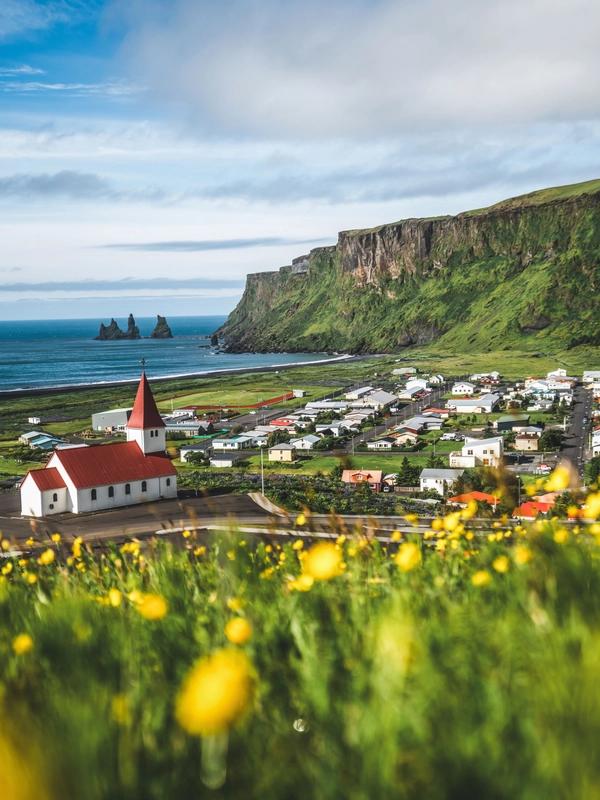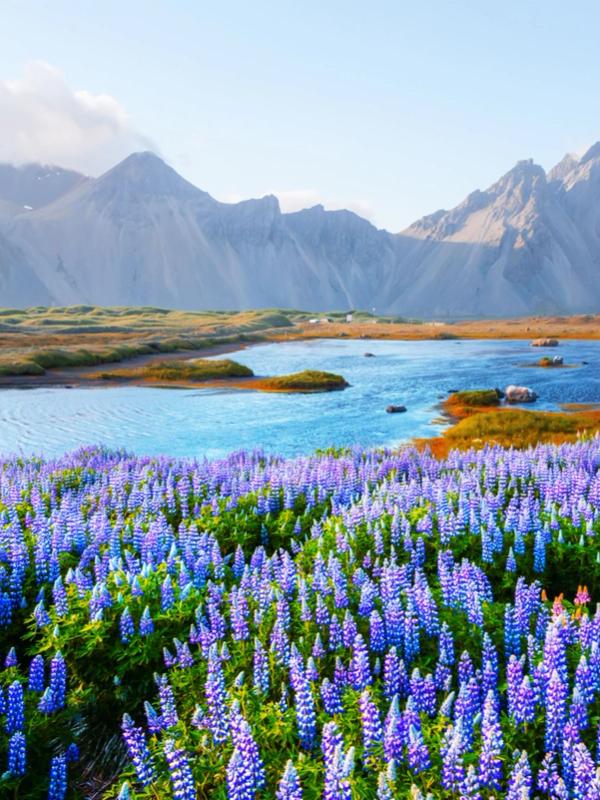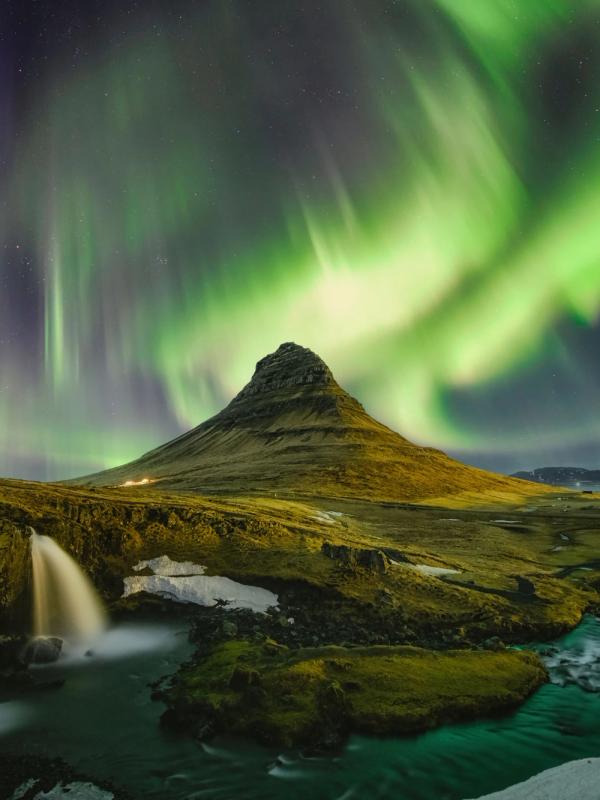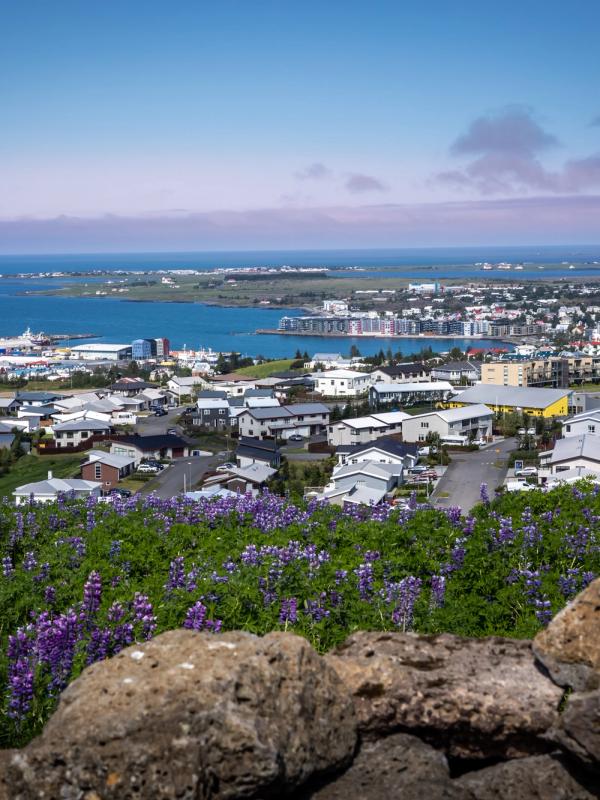
Hafnarfjörður: Iceland's Hidden Gem of Vikings, Elves, and Lava
Iceland has no shortage of incredible places to visit, but many travelers rush through Reykjavík and head straight to the Golden Circle or Ring Road. What they miss is Hafnarfjörður, a charming harbor town just 10 km south of the capital that's packed with unique attractions, rich history, and some of Iceland's most interesting folklore.
Key takeaways:
- Hafnarfjörður is Iceland's third-largest city but it feels like a small town
- Known as the "Town of Elves and Lava," with unique folklore that influences urban planning
- Home to Iceland's biggest Viking Festival in June
- Just 20 minutes from Reykjavík by bus (#1)
- Built on 7,300-year-old lava fields with striking geological features
- September offers ideal visiting conditions with fewer crowds and northern lights possibilities
What's Hafnarfjörður?
Hafnarfjörður (pronounced "HAP-nar-fyorr-thur") is a coastal town in southwestern Iceland with a rich history rooted in fishing, trading, and Viking heritage. The name means "harbor fjord," fitting for a place that's been a maritime hub since the 14th century.
The town is built on ancient lava fields from the Krýsuvík volcanic system, creating a rugged landscape that frames the colorful buildings. With about 31,500 residents, it's Iceland's third-largest city but keeps a small-town feel that's clear when you walk its streets.
What makes Hafnarfjörður special is its connection to Icelandic folklore. It's known as the "Town of Elves and Lava," where belief in the Hidden People (Huldufólk) is so strong that roads have been rerouted to avoid disturbing rocks where elves are said to reside. Álfagatan (Elf Street) is perhaps the most famous example of this unique urban planning approach.

Hafnarfjörður Today
Today, Hafnarfjörður blends its historical roots with modern Icelandic life. The harbor remains active, although it's now the second-ranked import/export harbor in Iceland, rather than just a fishing port. The town hosts cultural events throughout the year, including the popular Viking Festival in June and various music festivals that showcase why it's called "Iceland's rock 'n' roll capital."
The town is home to FH Hafnarfjörður, one of Iceland's most successful sports clubs, particularly in football and handball. And yes, you'll find the world's northernmost cricket field here, opened in 2019.
Despite being close to Reykjavík, Hafnarfjörður maintains its distinct identity, offering visitors a chance to experience authentic Icelandic culture away from the capital's more touristy attractions.
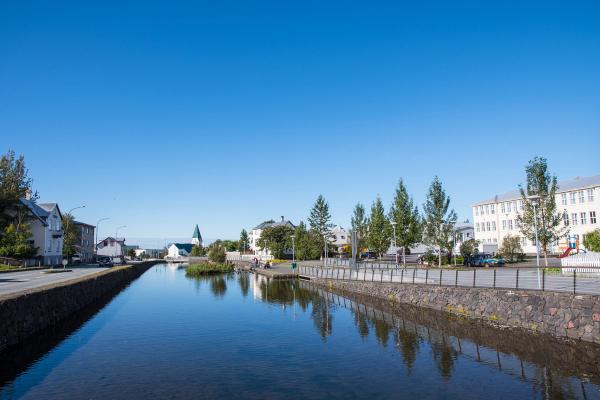
Location & How to Get There
Hafnarfjörður is situated in the Reykjavík Capital Region on Iceland's southwestern coast, approximately 10 km south of downtown Reykjavík and about 40 km northeast of Keflavík International Airport.
Getting to Hafnarfjörður is simple:
From Reykjavík:
- Bus #1 runs regularly between Reykjavík and Hafnarfjörður, taking about 10 minutes and costing around 490 ISK (about $3.50 USD)
- Taxis take about 15 minutes but cost more (3,500-4,500 ISK)
- Rental cars offer flexibility, with free parking available throughout most of Hafnarfjörður
From Keflavík Airport:
- Bus #55 connects the airport to Hafnarfjörður every 1.5 hours, costing 1,950 ISK ($16)
- Rental cars take about 30 minutes via Route 41
- Airport taxis offer direct service but cost around 15,000 ISK
The town's compact center is easily walkable, with most attractions within a 15-minute stroll of each other. This makes it a good base for exploring both the local sights and taking day trips to nearby areas, such as the Reykjanes Peninsula, home to the Blue Lagoon and dramatic coastal scenery.
Hafnarfjörður's position on the southwestern coast also makes it a convenient starting point for trips to Bessastaðir, the official residence of the President of Iceland.
Things to Do & Natural Attractions
Hafnarfjörður offers a good range of activities in a relatively small area. Here's what to see:
Cultural Highlights
Viking Festival
If you're visiting in June, this is a must-see. The annual Viking Festival transforms Víðistaðatún into a Norse village, featuring reenactments, traditional crafts, sword-fighting demonstrations, and authentic Viking cuisine. It's one of the largest Viking festivals in Europe, offering a hands-on way to connect with Iceland's Norse heritage.
Hafnarfjörður Museum
Housed in several historic buildings, this museum complex shows the town's rich history. Sívertsenshús, built in 1803, is worth visiting to see how an upper-class merchant family lived in the 19th century. The museum is open daily from 12:00 to 17:00, except on Tuesdays, when it’s closed.
Elfhus and Litla Álfabúðin Café
Explore Icelandic folklore at these spots dedicated to the Hidden People. The café serves homemade pastries in a setting that feels different from typical tourist cafés.
Viking Village
This themed complex includes a restaurant serving traditional Viking-inspired meals. The setting is fun if a bit touristy, but it's a good place to try Icelandic specialties like hangikjöt (smoked lamb) or plokkfiskur (fish stew).
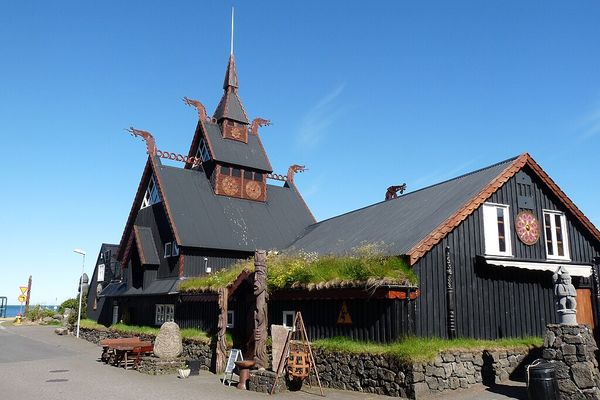
Natural Wonders
Hellisgerði Park
Known locally as "Elf Park," this lava garden, dating back to 1922, features paths through moss-covered lava formations that are believed to house elves. It's also home to the northernmost bonsai trees in the world – a surprise find in Iceland!

Víðistaðatún Sculpture Park
This green space shows outdoor sculptures by local and international artists, centered around Víðistaðakirkja church (built 1988). It's ideal for a relaxed walk and some unique photos.
Hvaleyrarvatn Lake
This lake, surrounded by rolling hills, offers peaceful walks and is a popular destination among locals for fishing and picnicking in the summer.
Hamarinn Cliffs
These lava cliffs rise from the town center and are striking during Christmas when they're lit up. The contrast between urban life and raw nature is typically Icelandic.
Mount Helgafell
A moderate hike up this 338m mountain rewards you with views of Hafnarfjörður, Reykjavík, and on clear days, the Reykjanes Peninsula. Multiple trails offer different difficulty levels, starting from the Kaldársel water reserve.
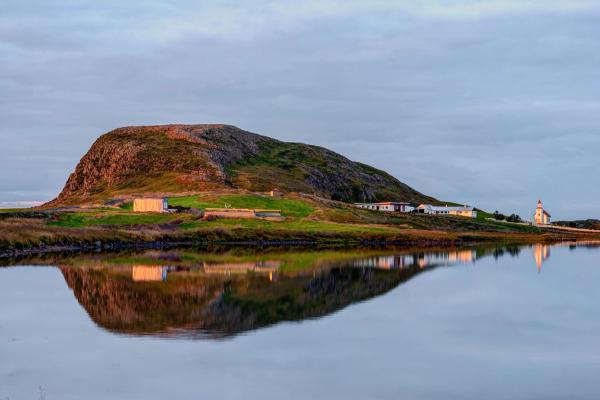
Local Experiences
Geothermal Swimming Pools
Like every proper Icelandic town, Hafnarfjörður has good swimming pools. Ásvallalaug is popular for its outdoor hot pools, waterslides, and steam rooms. Entry for adults costs 1,200 ISK, but it’s free for children under 18.
Icelandic Horse Riding
Íshestar offers daily rides through lava fields and around Mt. Helgafell. Tours depart at 10:00, 13:00, and 14:00 and are suitable for beginners. There are also multi-day tours for more advanced riders.
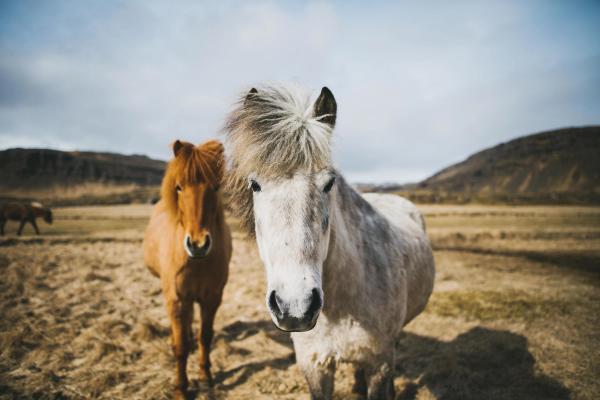
Harbor Walks
The dock area with its small-boat marina offers walks with views across Faxaflói Bay. This working harbor offers a glimpse into Iceland's maritime traditions and the fishing industry, which remains central to the town's economy.
Hovdenak Distillery Tour
This distillery offers personalized tours showcasing unique Icelandic spirits. Visitors can sample liquors and learn about the production process.
Berserkir Axarkast
Try axe throwing at this unique venue. It's therapeutic and a different alternative to the typical touristy activities.

Weather & Best Time to Visit
Iceland's weather changes often, and Hafnarfjörður is no exception. The town has a subpolar oceanic climate, characterized by cool, wet conditions year-round.
Summer (June-August):
- Temperatures range from 10-15°C (50-59°F)
- Up to 21 hours of daylight due to the Midnight Sun
- The busiest tourist season with higher prices
- Good for outdoor activities like hiking and riding
- Key events include the Viking Festival and Fishermen's Day celebrations
Winter (November-March):
- Temperatures hover around 0°C (32°F), rarely dropping below -5°C (23°F)
- Only 4-6 hours of daylight in December
- Northern Lights viewing opportunities at Aurora Basecamp
- Christmas Village in December
- Much quieter, with lower prices
Shoulder Seasons (April-May, September-October):
- Temperatures between 5-10°C (41-50°F)
- Fewer tourists and lower costs
- Spring brings blooming landscapes
- Fall offers colorful foliage, and Northern Lights viewing begins
September is a particularly good time to visit. The weather remains relatively mild, tourist crowds have thinned, and the Northern Lights begin to show up. You'll get a more authentic experience while still having good conditions for outdoor activities.
That said, each season offers unique aspects. Summer's endless daylight creates a different atmosphere for exploring, while winter's darkness makes the geothermal pools and warm cafés more appealing.
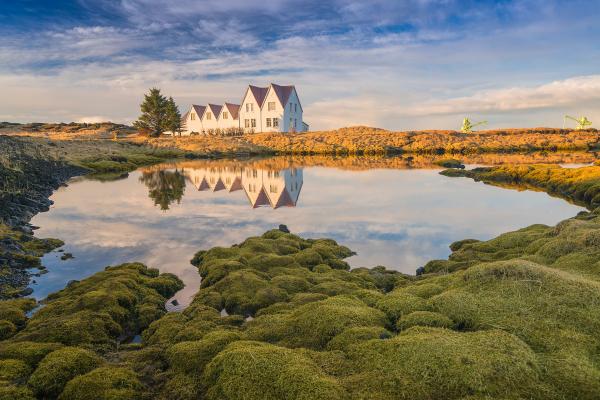
Cool & Unique Facts about Hafnarfjörður
Hafnarfjörður is full of quirky details and fascinating stories that make it stand out from other Icelandic towns.
- Elven Urban Planning: Roads like Strandgata and Austurgata have been rerouted to avoid disturbing rocks believed to house elves. This practice of accommodating folklore in modern development is rare worldwide, but taken seriously here.
- World's Northernmost Cricket Field: Opened in 2019, Hafnarfjörður's cricket field was inaugurated by Prime Minister Katrín Jakobsdóttir. It's a surprise find in a country not known for cricket, reflecting the town's growing multicultural community.
- Iceland's Only Catholic Monastery: Karmelklaustur, established in 1939, is a quiet spiritual retreat in this predominantly Lutheran country. Visitors can arrange guided tours to explore its grounds.
- Iceland's "Rock 'n' Roll Capital": Hafnarfjörður has produced several famous Icelandic bands, including HAM and Jakobinarina. The local venue Bæjarbíó regularly hosts performances showcasing Iceland's music scene.
- First Car in Iceland: In 1913, Hafnarfjörður welcomed Iceland's first automobile, a milestone in the country's modernization that reflects the town's historical role as a progressive trade hub.
- Aluminum Industry: The town has been home to an aluminum smelter since 1969, part of Iceland's aluminum smelting industry that takes advantage of the country's abundant hydroelectric power. Tours are not available, but the facility can be seen from the town's outskirts.
- Parliamentary Connections: While Iceland's parliament (Alþingi) is in Reykjavík, Hafnarfjörður has historic connections to national politics, with several prominent politicians coming from the town.
- Historic Churches: Hafnarfjarðarkirkja, consecrated in 1914, is a stunning example of early 20th-century Icelandic architecture and remains a vital community center.

Practical Tips for Visiting
- Transportation: Bus #1 runs regularly between Reykjavík and Hafnarfjörður until midnight, making it easy to base yourself here while exploring the capital.
- Accommodations: Hotel Viking offers themed rooms near the harbor, while guesthouses like Harbour Inn provide budget-friendly options. Book ahead during summer and festival periods.
- Food: Try local seafood at places like Von Mathús or more casual fare at Tilveran. Pallett Coffee House is good for a coffee fix.
- Money: While cards are widely accepted, having some cash (Icelandic króna) is useful for small purchases. ATMs are available throughout town.
- Packing: Layers are essential year-round, as is a waterproof jacket. Sturdy shoes are needed for exploring lava fields and hiking trails.
- Language: While Icelandic is the official language, English is widely spoken, especially in tourist areas.
- Etiquette: Respect nature and folklore sites. Never move rocks in areas known for elven folklore – it's considered both culturally insensitive and environmentally harmful.
Summary
Hafnarfjörður offers a unique blend of accessibility and authenticity that's becoming increasingly rare in Iceland's more popular destinations. Just minutes from Reykjavík but different in atmosphere, this harbor town combines Viking heritage, elven folklore, and stunning natural features into an experience that feels genuinely Icelandic.



